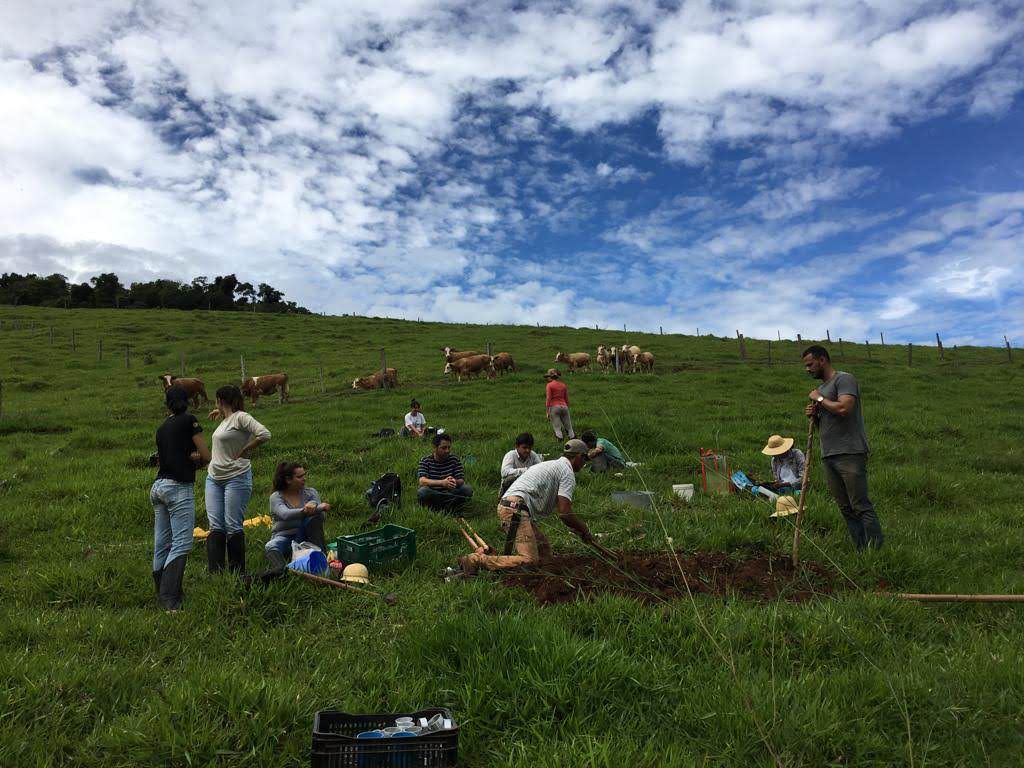This is the first study to evaluate the potential for groundwater recharge as an additional soil function. The researchers highlight that the potential for water recharge is a vital function of the soil and must be incorporated into the monitoring of impacts on environmental quality.
Study reveals that the key to increasing water security in the Cantareira System, responsible for the water that reaches up to 7 million people in the metropolitan region of São Paulo, is improving soil quality, through more sustainable practices. This is the conclusion of the article: “Interactions between land use and soil type drive soil functions, highlighting water recharge potential, in the Cantareira System, Southeast of Brazil” (Interações entre uso da terra e tipo de solo determinam funções do solo, destacando potencial de recarga hídrica, no Sistema Cantareira, Sudeste do Brasil) publicado na revista Science of the Total Environment, em dezembro de 2023.“
Well-functioning soils can provide food and clean water while buffering the effects of climate change and protecting natural resources. The research also has the potential to help determine priority areas for conservation and restoration practices.
The article results from the collaboration of five research institutions: IPÊ – Institute for Ecological Research, UFLA – Federal University of Lavras, Federal Institute of Education, Science and Technology of Mato Grosso, University of Florida and Cornell University. The article highlights that the change of native forest to agricultural production areas is the main factor in reducing soil quality in the surface layer due to soil compaction. The research performed in the municipalities of Nazaré Paulista, Piracaia and Joanópolis, in the state of São Paulo, provides information to understand how crucial soil functions are affected by agricultural practices – which are common in the region, but which compromise essential soil functions, such as water recharge.
Sustainable Production Systems already show results
The Cantareira System is mainly occupied by urban areas and livestock (46%), forests (35%), eucalyptus forestry (16%) and reservoirs (3%). Analyzes carried out demonstrate that water infiltration was not favored by pasture systems without adequate management, due to compaction. However, rotational grazing, one of the Ecological Pasture Management strategies, promotes denser vegetation cover, greater soil organic matter content and greater root activity. These characteristics increase the soil’s bearing capacity within a range of elastic deformations, as well as resilience to the impact of animal traffic. The Semeando Água project has already converted 100 hectares from conventional pasture to ecological pasture and will expand implementation to another 100 hectares in the next 2 years.
The study assessed the interaction between soil type (Argisol, Cambisol and Neosol) and land use and management (rotated and continuous pastures, eucalyptus cultivation and native forest), based on analyzes of soil samples from the layers most representative of changes of physical, chemical and biological properties (0-5cm and 30-35cm).
Soil functions and the Soil Physical Quality Index (SPQI) were calculated with a range from 0 to 1, in which optimal scenarios received a value of 1 and worst scenarios a value of 0. The study confirms that native forests presented the highest score in quality index of groundwater recharge potential in the surface layer of the soil, of 0.72 in Cambisols – young and shallow soils – contrasting with 0.16 for extensive pasture with signs of degradation, a 350% difference in practice.
Soils covered by native vegetation show higher carbon content and, consequently, greater microbial activity, diversity and abundance of macrofauna components, which act as seed dispersers. These results reinforce the need to expand “Nature-Based Solutions”, agricultural techniques that regenerate the soil by reproducing positive factors observed in native forests.
“Restoring degraded soils is one of the main ways to promote water security for the Cantareira System. This way, it is possible to make better use of rainwater, increasing its infiltration area, so that reservoir levels remain more stable. Climate change worsens the occurrence of extreme events, such as prolonged droughts, and this is an important mitigation measure. We need to prepare now to avoid new supply crises. This research presents data that prove the benefits of forest restoration in Permanent Preservation Areas (APPs) and the use of agricultural techniques that regenerate the soil. That is why it is so important to work with rural producers in the region”, explains Alexandre Uezu, one of the authors. Uezu is coordinator of the Semeando Água Project, an initiative of IPÊ – Institute for Ecological Research, sponsored by Petrobras Socioambiental Program, and professor at ESCAS – Higher School of Environmental Conservation and Sustainability.
Monna Lysa Santana, first author of the article and researcher at Embrapa Milho e Sorgo, highlights that it is possible to balance food production and maintenance of other soil functions, mainly water recharge, but it is necessary to be aware of the management techniques applied in each situation and the natural potential of each type of soil. “This work aimed to study three very important soils in the region. Sample collection was carried out on farms operated by the Semeando Água Project. In relation to the water crisis in the Cantareira System, this type of assessment contributes to quantifying the sustainability of the system, through soil health through the measurement of soil properties, addressing aspects of structure, porosity, water recharge capacity, fertility, storage of carbon and erosion resistance capacity”.


